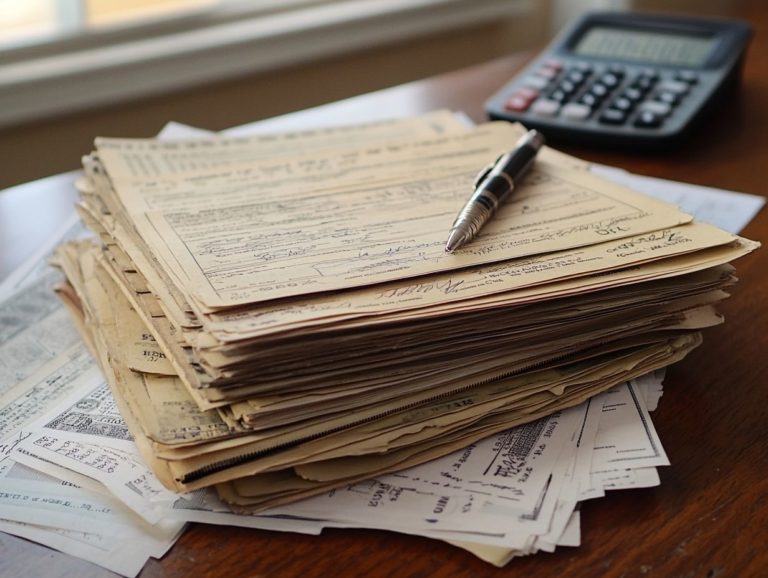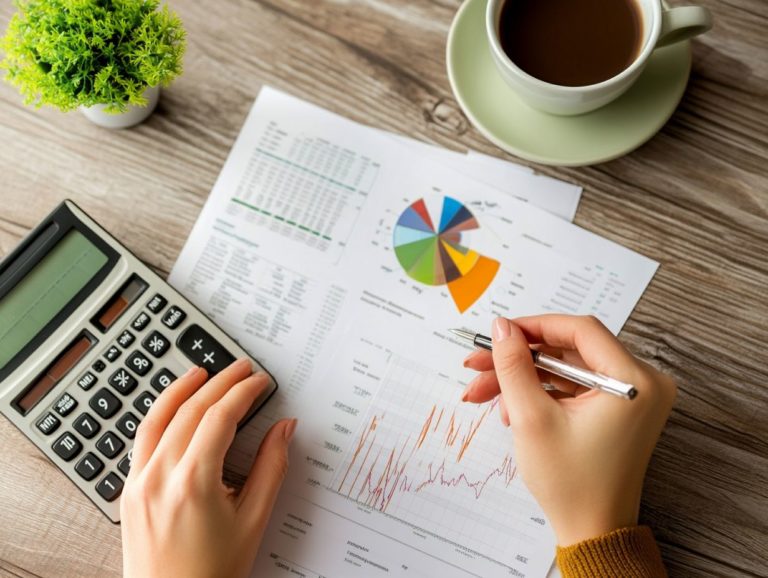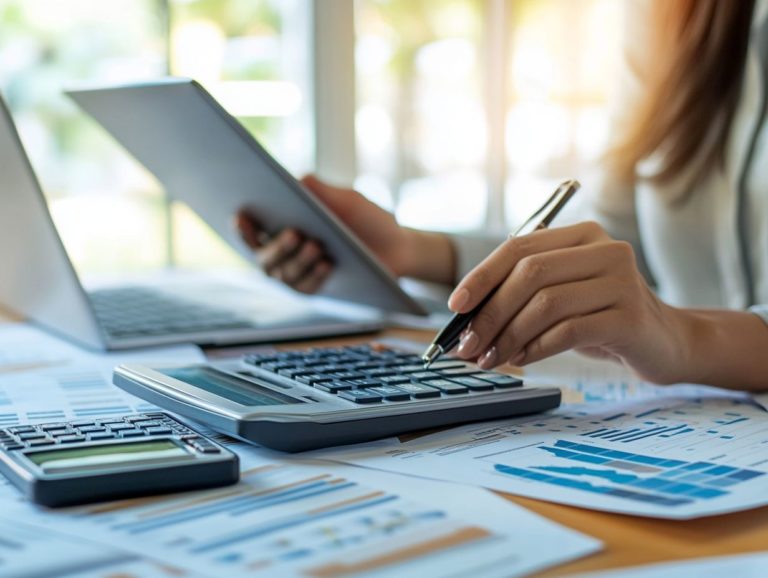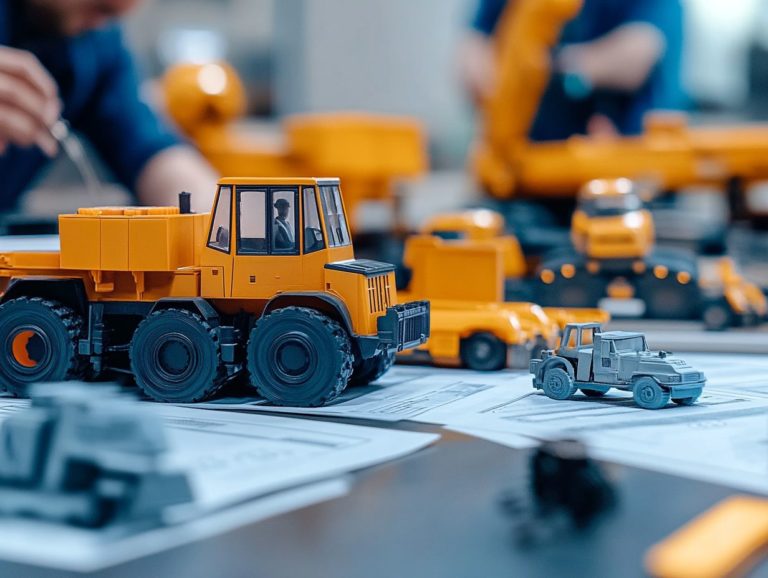5 Benefits of Owning Physical Precious Metals
Investing in physical precious metals presents a distinctive array of advantages that can elevate your financial plan.
From enhancing portfolio diversification to serving as a robust protection from inflation, these tangible assets not only offer security but also the potential for significant returns.
This article delves into the primary benefits of owning physical precious metals, examines the different types available, and highlights essential considerations such as value factors, purchasing methods, storage, and tax implications.
Explore how these timeless assets can become an integral part of your investment journey.
Contents
- Key Takeaways:
- 1. Diversifies Your Investment Portfolio
- 2. Provides a Hedge Against Inflation
- 3. Offers Tangible Value and Security
- 4. Can Be Used as a Form of Currency
- 5. Potential for High Returns
- What Are the Different Types of Physical Precious Metals?
- Frequently Asked Questions
- What are the 5 benefits of owning physical precious metals?
- Can anyone invest in physical precious metals?
- Which precious metals should I consider for my investment?
- What are the risks associated with owning physical precious metals?
- How do I store my physical precious metals?
- Can I use physical precious metals as a form of currency?
Key Takeaways:
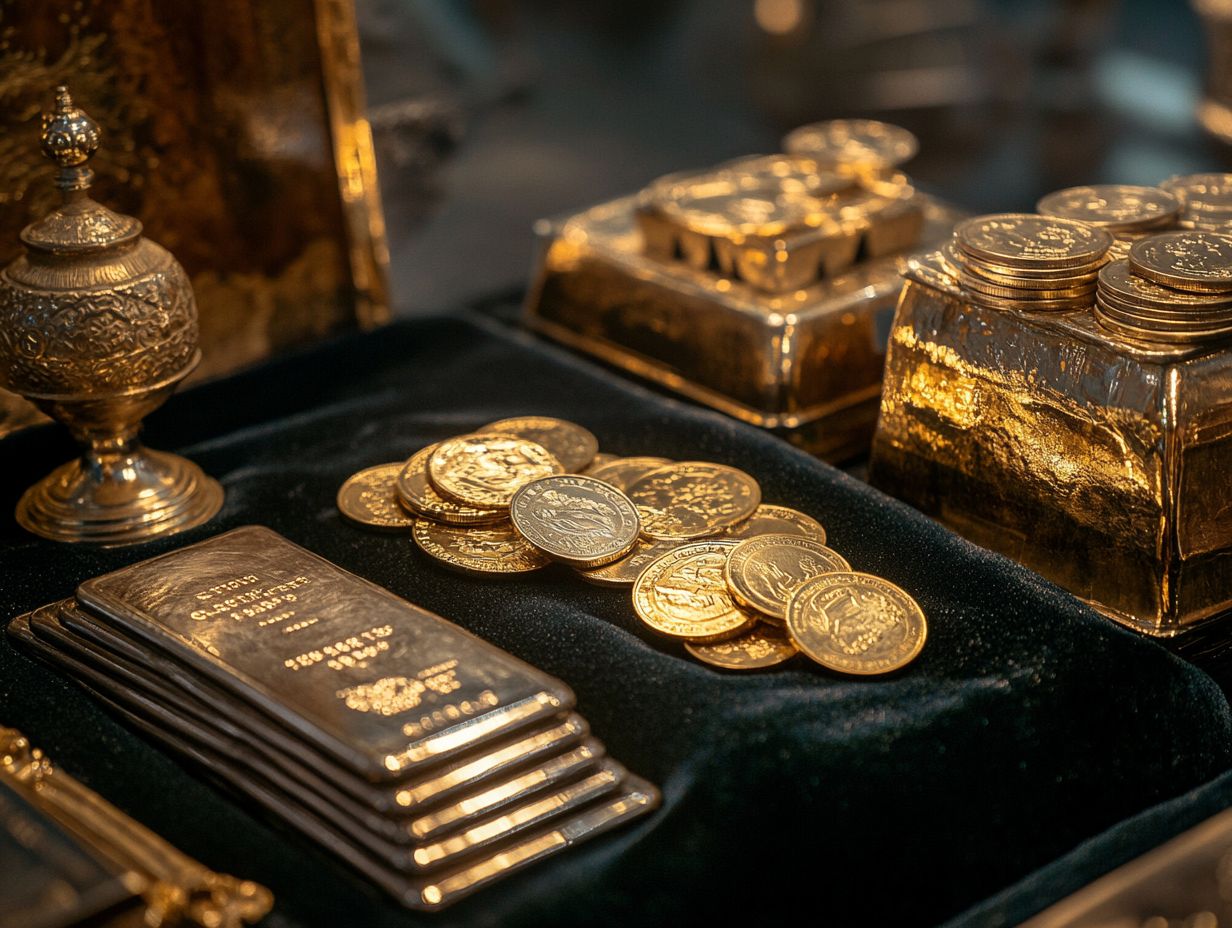
- Diversify your portfolio with stable and growing physical precious metals.
- Protect your wealth from inflation with precious metals that hold value.
- Enjoy tangible assets you can own and access directly.
1. Diversifies Your Investment Portfolio
Investing in precious metals like gold, silver, platinum, palladium, and rhodium is a great way to diversify your investment portfolio. This strategy provides a buffer against market volatility.
During economic uncertainties, gold investments often appreciate in value. Investing in silver also offers intrinsic value and industrial uses. By incorporating other precious metals like platinum and palladium, you can further fortify yourself against inflation and currency devaluation.
Utilizing resources like AU Precious Metals can significantly enhance your investment strategy, granting you access to a diverse array of options tailored to your individual risk tolerances. This ensures a well-rounded approach to maintaining a healthy portfolio.
2. Provides a Hedge Against Inflation
Precious metals are your steadfast allies against inflation, serving to shield you from the corrosive effects of rising prices and economic turmoil. They play a vital role in enhancing your overall financial security, especially in turbulent market conditions.
Historically, during periods of economic instability, both gold and silver have showcased their remarkable ability to retain value, often appreciating when traditional investments stumble. As inflation escalates and the purchasing power of currency dwindles, many individuals gravitate toward these tangible assets in search of stability.
Owning precious metals diversifies your investment portfolio and boosts your confidence when faced with financial uncertainty. This solidifies their reputation as a trusted safeguard against the unpredictable twists and turns of the economy, highlighting the benefits of investing in physical metals.
3. Offers Tangible Value and Security
Owning precious metals like gold, silver, collectible jewelry, and numismatic coins offers you tangible value and security attributes that are increasingly coveted by investors seeking physical commodities that grant ownership control in today s unpredictable financial landscape.
These assets not only maintain their intrinsic worth but often appreciate over time, serving as a robust shield against inflation and economic downturns. Collectible jewelry holds emotional significance and personal stories, enhancing its allure and long-term value. Concurrently, numismatic coins are collectible coins that have historical value, enchanting both collectors and investors alike.
This blend of financial stability and emotional connection makes diversifying your investment portfolio with physical commodities a savvy move. It allows you to protect your wealth while also reveling in the beauty and rich histories embodied in your collection.
4. Can Be Used as a Form of Currency
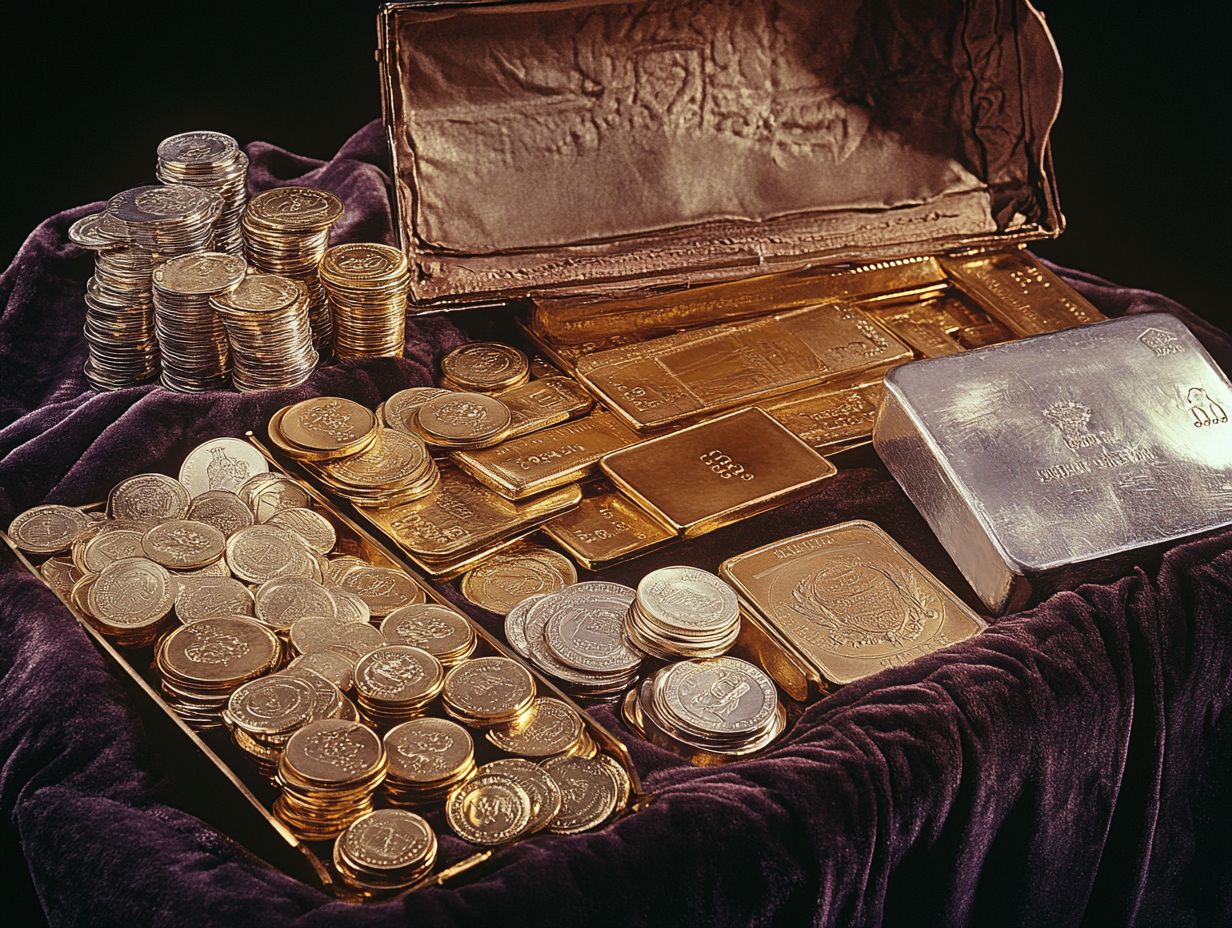
Precious metals like gold and silver have served as reliable forms of currency for centuries. They are easy to turn into cash, making them essential for your investment portfolio.
Throughout history, societies have valued these metals for their beauty and worth. They remain trustworthy mediums of exchange, especially in uncertain times.
By incorporating precious metals into your investment strategies, you can protect your wealth from rising prices and currency devaluation. This ease of converting physical assets into cash enhances their appeal, making them an attractive option for anyone looking to diversify their investment portfolio.
5. Potential for High Returns
Investing in precious metals offers the potential for impressive returns, especially when you focus on gold, platinum, and rhodium. These assets often outperform traditional investments, particularly during fluctuating markets.
Historically, precious metals have served as safe havens, attracting investors during economic downturns and geopolitical uncertainties. For example, gold has consistently shown strength during recessionary periods, while platinum and rhodium can experience price surges driven by changing industrial demand.
To maximize your gains, it s crucial to develop a diversified investment strategy. This could involve actively trading based on market trends, holding assets long-term to capture appreciation, and understanding the unique strengths of each metal. By staying informed about market dynamics and aligning your investments with broader economic indicators, you can enhance your returns and build a solid defense against inflationary pressures.
What Are the Different Types of Physical Precious Metals?
The world of precious metals presents a variety of options, including gold, silver, platinum, palladium, and rhodium each with unique characteristics and investment potential tailored to your goals.
These metals are not just admired for their stunning aesthetics; they also hold intrinsic value and rarity. Gold, often seen as a safe haven during economic turbulence, is widely used in jewelry and serves as a cornerstone in financial markets.
Silver shines both as a valuable asset and a key component in technology due to its industrial applications. Meanwhile, platinum and palladium are vital in automotive catalysts and various industries, highlighting their practical importance.
As an investor, you can select from several forms, such as coins, bullion, and jewelry. Each presents distinct advantages aligned with your investment objectives:
- Coins are often favored for their numismatic value.
- Bullion attracts those seeking tangible assets.
- Jewelry not only adorns but can also serve as a long-term investment, beautifully merging aesthetics with financial security.
What Factors Affect the Value of Physical Precious Metals?
Several factors shape the value of physical precious metals, including market trends, economic conditions, and the fluctuating gold and silver spot prices. Each can significantly influence your investment decisions in this arena.
Among these factors, the dynamics of supply and demand are crucial. For instance, if industrial usage surges, you might see silver prices climbing. Conversely, geopolitical events, especially tensions in oil-rich regions, often drive investors to seek the safe haven of gold. Historical events, such as the 2008 financial crisis, illustrate this well; during that time, gold prices soared as market instability pushed individuals toward precious metals to preserve their wealth.
Shifts in investor sentiment, influenced by inflation and interest rates, can also lead to rapid price changes. This interplay of elements dictates the market for these valuable assets. Staying informed and agile in your investment strategy is essential.
How Can One Purchase Physical Precious Metals?
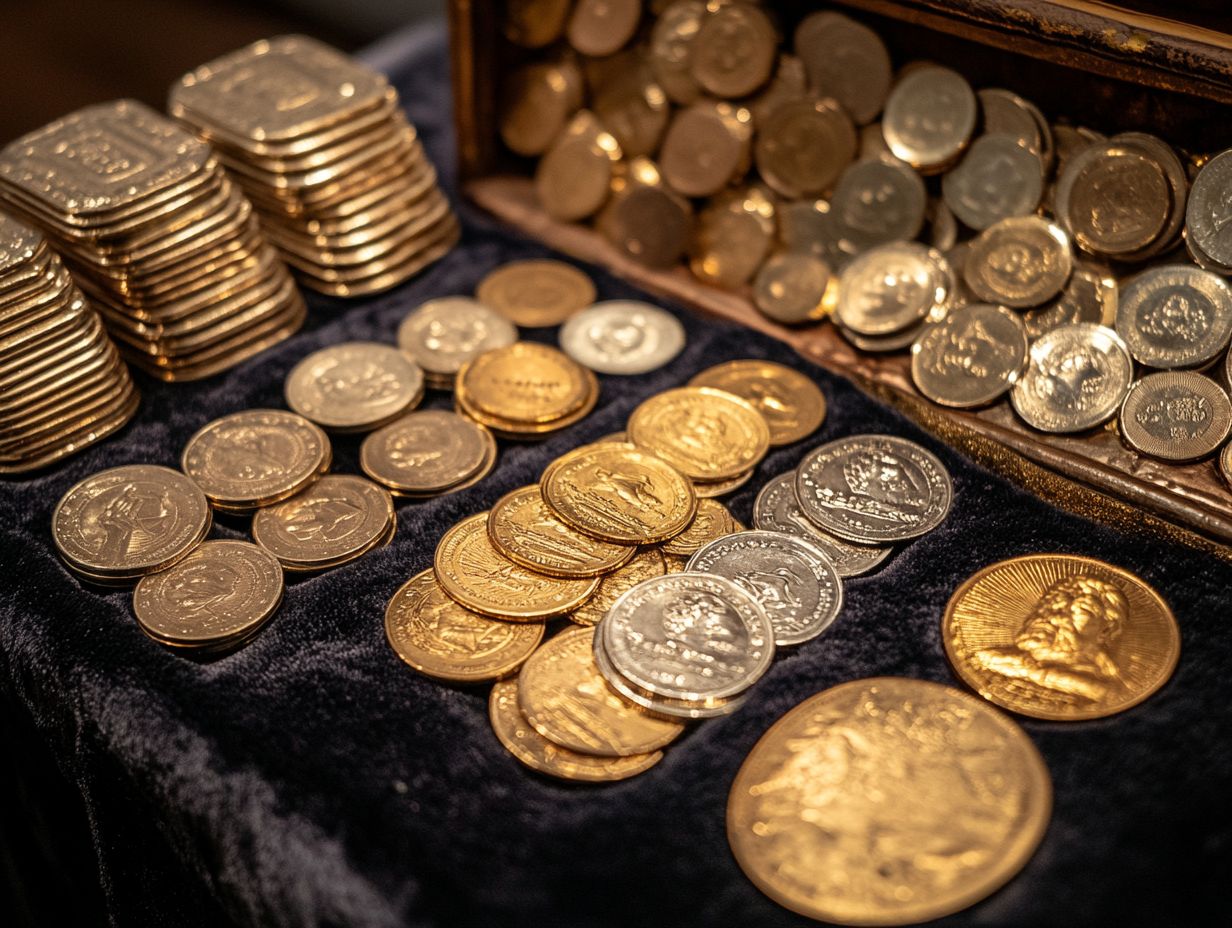
Purchasing physical precious metals like gold and silver can be done through various channels, such as reputable dealers, online platforms, and specialized firms like AU Precious Metals. Each option has unique advantages for discerning investors.
You might consider making direct purchases from local shops or bullion dealers. This lets you check the product in person, which is always reassuring. However, keep in mind that this approach may limit your selection and could come with higher premiums.
Auctions can be an exhilarating way to acquire rare pieces or snag great deals. However, they require your full attention to auction terms and potential buyer’s premiums.
On the other hand, online resources provide unparalleled convenience and an extensive range of options. Just ensure that the source is trustworthy to protect yourself from scams.
Taking the time to evaluate the pros and cons of each channel will help you make informed decisions that align perfectly with your investment goals.
What Are the Risks of Owning Physical Precious Metals?
Investing in physical precious metals can certainly be a lucrative venture, but it comes with its fair share of risks, including market volatility and difficulties in selling your metals quickly. There are also potential issues surrounding ownership and storage.
These risks can significantly affect your profits. Price fluctuations can lead to unexpected losses, while the threat of theft looms for those who store physical assets at home. Liquidity issues can arise when you try to sell your metals quickly, especially during market downturns.
To navigate these hazards effectively, you should approach your investment strategy with meticulous planning. Consider secure storage options and diversify your asset portfolio to enhance your risk management.
How Can One Store and Protect Their Physical Precious Metals?
Storing and protecting your physical precious metals is vital for ensuring their safety and maintaining control over ownership. You need to carefully consider your storage options and security measures.
You have several methods at your disposal to safeguard these valuable assets. For instance, home safes provide immediate access but come with risks in the event of theft or fire. On the other hand, bank safety deposit boxes offer enhanced security, although access is limited to bank hours. If you re looking for even greater protection, professional vaults designed specifically for storing precious metals present an excellent solution, complete with high-level security features.
No matter which storage method you choose, investing in insurance is a crucial step. This additional layer of protection shields you from potential losses and grants you peace of mind, knowing your investments are comprehensively safeguarded.
What Are the Tax Implications of Owning Physical Precious Metals?
Understanding the tax implications of owning precious metals is crucial for your financial health. It s essential to grasp these to ensure compliance and enhance your security.
Navigating these obligations requires you to be aware of how transactions whether buying, selling, or holding are classified under tax law. For example, profits from selling precious metals may be categorized as capital gains, which can lead to tax liabilities. Short-term gains could subject you to a higher tax rate compared to those from long-term holdings.
Certain types of precious metals, such as bullion, often fall into specific tax categories that differ from collectibles or numismatic coins. Understanding these nuances helps you meet legal requirements and sharpens your overall investment strategy, potentially saving you significant amounts in taxes.
Don t miss this opportunity to secure your investments! Consult a financial advisor for personalized advice today.
Frequently Asked Questions
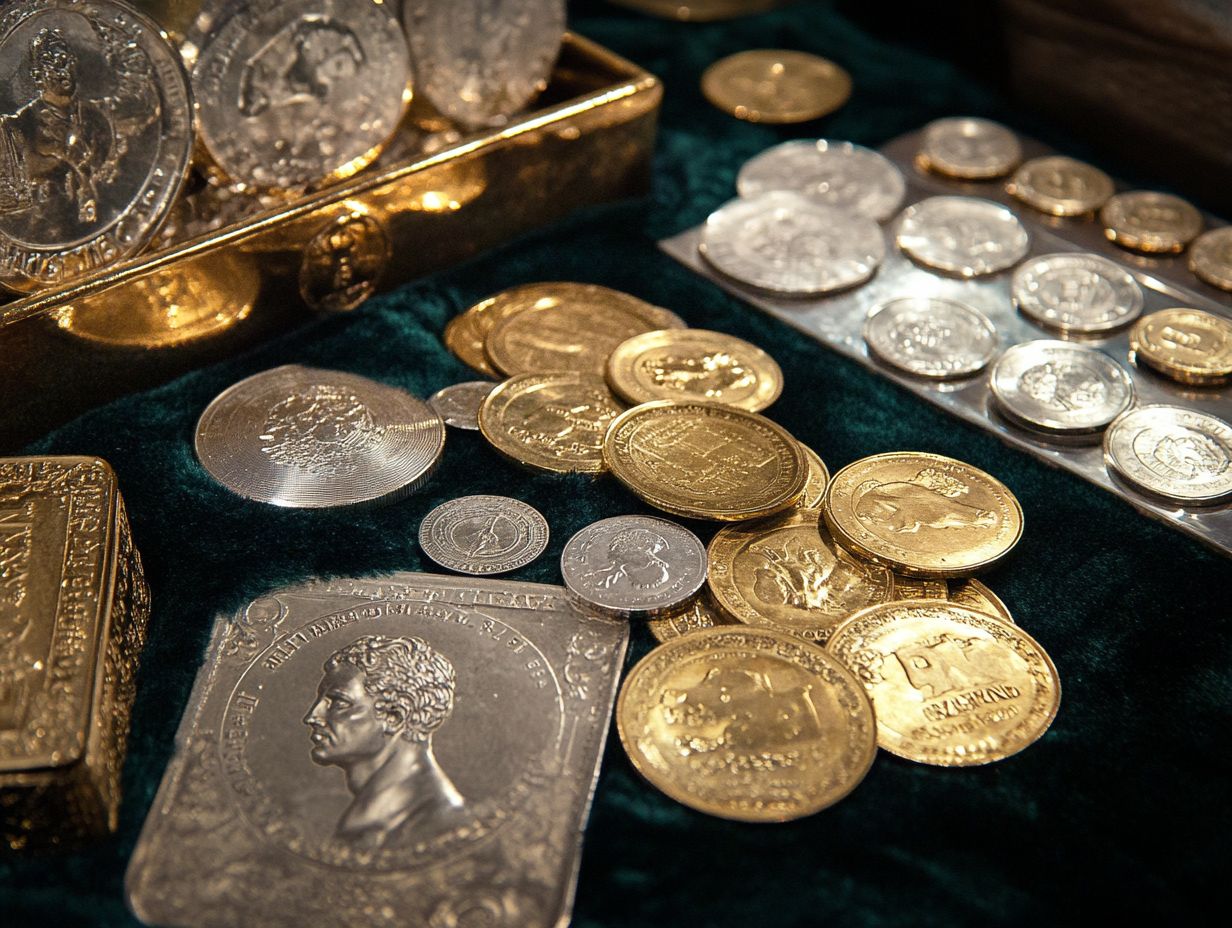
What are the 5 benefits of owning physical precious metals?
1. Diversification: Investing in physical precious metals like gold, silver, and platinum can help diversify your investment portfolio and reduce risk.
2. Protection against rising prices: Precious metals have historically maintained their value during economic uncertainty and inflation.
3. Tangible asset: Unlike stocks and bonds, physical precious metals are tangible assets that you can hold and own.
4. Store of value: Precious metals are recognized globally as a reliable store of value, retaining worth over time and easily convertible to cash.
5. Potential for appreciation: As demand for precious metals rises, their value can increase, offering potential for capital growth.
Can anyone invest in physical precious metals?
Anyone can invest in physical precious metals. Purchase from a trusted dealer today to secure your financial future or invest in them through a precious metals exchange-traded fund (ETF), which is a type of investment fund that trades on stock exchanges, similar to stocks.
Which precious metals should I consider for my investment?
You can invest in gold, silver, platinum, and palladium coins and bars. Each metal provides unique benefits and serves different purposes in your investment portfolio.
What are the risks associated with owning physical precious metals?
Like any investment, owning physical precious metals comes with risks, including market volatility and potential for theft or damage. Make sure to do your homework to protect your investment by working with a reputable dealer.
How do I store my physical precious metals?
You can store your physical precious metals at home in a secure safe or at a bank safe deposit box. Alternatively, consider using a secure third-party storage company.
Can I use physical precious metals as a form of currency?
In some situations, physical precious metals may be used as currency, especially during economic instability. However, they are not widely accepted as legal tender. Consult with a financial advisor before relying on them as a currency.










